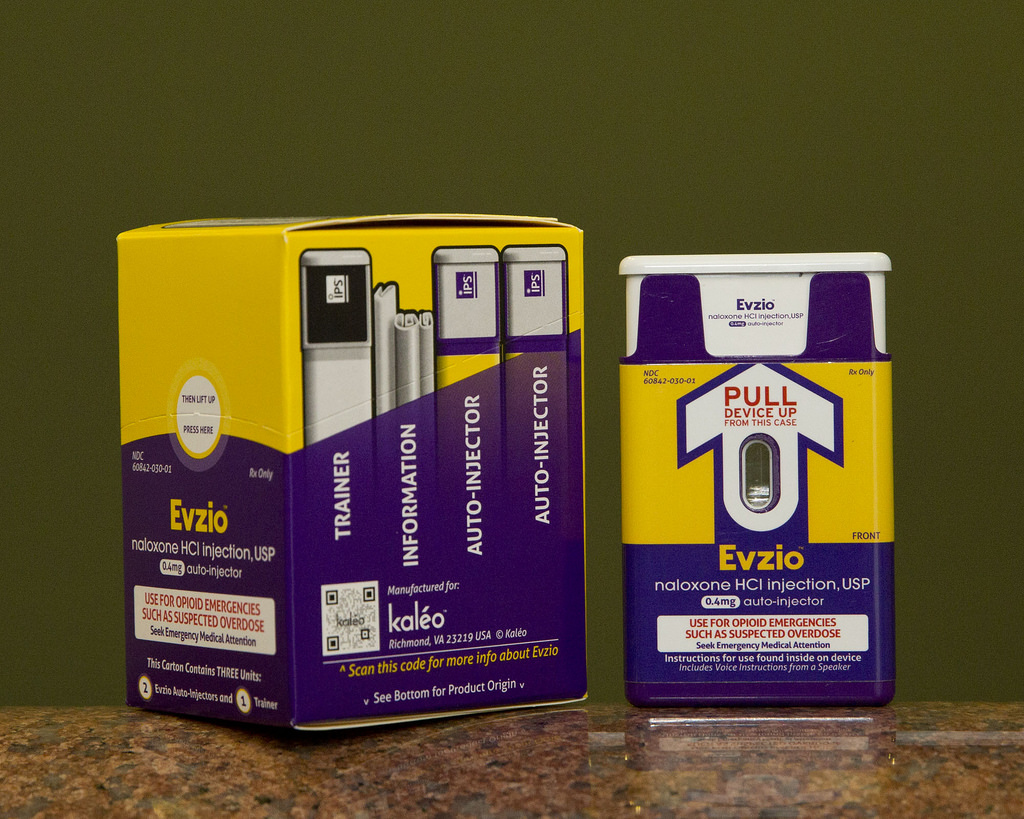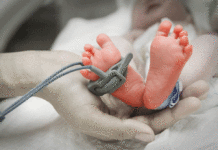While Evzio’s slogan is “Don’t hesitate. Be Evzio-ready,” its steep 550% markup from $575 to a whopping $4,000 will give many consumers pause.
At Kaleo, the underlying question executives seem to be asking is how much money would you pay for a product that is your best chance at saving a life? How much would you pay to bring your child, your partner, your parent back from the brink of death?
The number executives seem to have settled on is $4,000, which is the price for a two-pack of Evzio, a product which allows people with no medical training whatsoever to administer naloxone and reverse the effects of a drug overdose.
Despite the fact that naloxone is now considered a “generic drug” and costs only pennies to make, user-friendly options like Evzio continue to be limited and exceedingly overpriced.
Therefore, consumers are forced to weigh the costs and benefits before making a decision.
While this is normal practice when shopping for everything from shampoo to a new car, the difference is that in this scenario, a person’s life is at risk.
While Evzio is clearly the most intuitive to use, alternatives like syringe kits and nasal sprays are significantly cheaper and therefore more likely to be used. By raising the price of this life-saving drug, Kaleo is forcing their customers to find out which they prioritize more: money or a loved one’s life.
What Are My Options
Syringes are the cheapest option with syringe kits costing around $15, but they require precision and finesse. To administer the naloxone, users will have to use a 1 inch to 1.5 inch needle and inject it directly into the person’s muscle.
After removing the cap off the needle and the naloxone vial, and flipping the vial upside-down, users will then stick the needle into the vial, and pull down on the plunger until they extract 1 cc of the naloxone. Then, they will insert the needle into a muscle (usually in the thighs, shoulder, or upper or outer quadrant of the butt), taking care to keep the needle straight before pushing down on the plunger.
Nasal sprays are easier to use than syringes, but are more expensive. There are two nasal spray options: one which requires three separate pieces, and one which comes in one piece.
The first nasal spray, which uses a Luer-lock nasal atomizer, costs around $50 for a single dose and requires assembly before usage. To begin, users first remove the yellow caps from the syringe. Then, they will place the nosepiece or nasal atomizer (sold separately) onto the top of syringe. Next, they will pull off the red cap of the naloxone capsule, and screw the capsule into the barrel of the syringe. After that, they will insert the device into the nostril, and push on the end of the capsule until half the naloxone has been used up. Then, they will repeat the same step for the opposite nostril.
The second nasal spray, the Narcan Nasal Spray (Adapt Pharma), is FDA approved and costs $125 for a pack of two. Users simply have to place their thumb on the plunger, and their index and middle fingers on either side of the nozzle. Then, they must insert the nozzle into the nostril (until their 2 fingers reach the bottom of the patient’s nose), and push up on the plunger. Unlike with the Luer-lock nasal atomizer, the user only has to spray into one of the patient’s nostrils for the treatment to work.
Last but not least, Evzio is the easiest product to use, and requires no preparation or instruction. Simply by removing it from its case, users will prompt the automated voice guide to begin.
The voice guide will tell the user to remove the red safety guard, and place the product on the outer thigh of the patient. Then, it will tell the user to press down on top of the device for 5 seconds. This will cause the naloxone to be injected into the patient’s thigh. The device will even count down from 5 for you, and say when it is safe to remove the device.
Especially in the nerve-wracking situation of finding a loved one after they’ve overdosed, the difference between using one device or another could mean the difference between life and death; while you may not have the time or mental capacity to read through an instruction manual or assemble a nasal spray device, using Evzio only requires that you have the time to open a box and the capacity to follow directions.
Through its user-friendly design, Evzio minimizes the steps needed to administer naloxone and helps you to quickly and efficiently revive your loved one.
Money Talks
While Evzio is an amazing product which can help to save lives, it is also an exploitative one which takes advantage of insurance companies and consumers.
The product itself only costs $80 to make, and is essentially a box that talks to you, yet it is marketed at the inordinate price of $4,000.
As Dr. Jennifer Plumb, the leader of a naloxone-distributing organization, astutely observed in her interview on 60 minutes, “I bought a card that talks to me at Walmart for $1.49.”
Kaleo’s C.E.O. Spencer Williamson rationalized this price hike by arguing that it will make Evzio more accessible. By charging insurance companies this high price, while giving it to consumers for free if their insurance plan doesn’t cover it, or paying for their copay if it does, they can ensure everyone who needs the drug can have access to it.
Financially, Kaleo can afford to use this strategy by raking in the money from the insurance companies that do cover Evzio, and using that extra profit to give some Evzio away for free.
However, far from helping anyone, the actual effects of this plan are increased rates on healthcare which are paid for by consumers.
In addition, by getting doctors to say that the product is “medically necessary,” Kaleo is also forcing Medicare to foot the bill, resulting in “more than $142 million in charges to taxpayers in just the last four years,” according to a report entitled “Combating the opioid crisis: the price increase of an opioid overdose reversal drug and the cost to the U.S. healthcare system.”
As a result, Kaleo is currently under investigation by the U.S. Senate for charges of exploiting Medicare.
They have since backtracked in their pricing strategy. Williamson even offered on live television to give insurance companies Evzio for the original price of $575, so long as they ensure that “when a physician decides a patient is at risk, they can get it and they can afford it.”
Despite this promising statement, it is unclear how long it will take to follow through on their CEO’s promise, how they will determine whether or not an insurance company meets the criteria stated above, and how this will affect access to Evzio in the long run.
And while overdose reversal drugs are not the solution to addiction, they are a necessity if we are to help those struggling with addiction to have the chance to recover.
As Mary Hawk, James Egan, and Chris Keane of the University of Pittsburgh Graduate School of Public Health wrote in an email to CNN, “At a very basic level — the longer we are able to keep individuals alive, the more chance they have at being successful in recovery.”
















